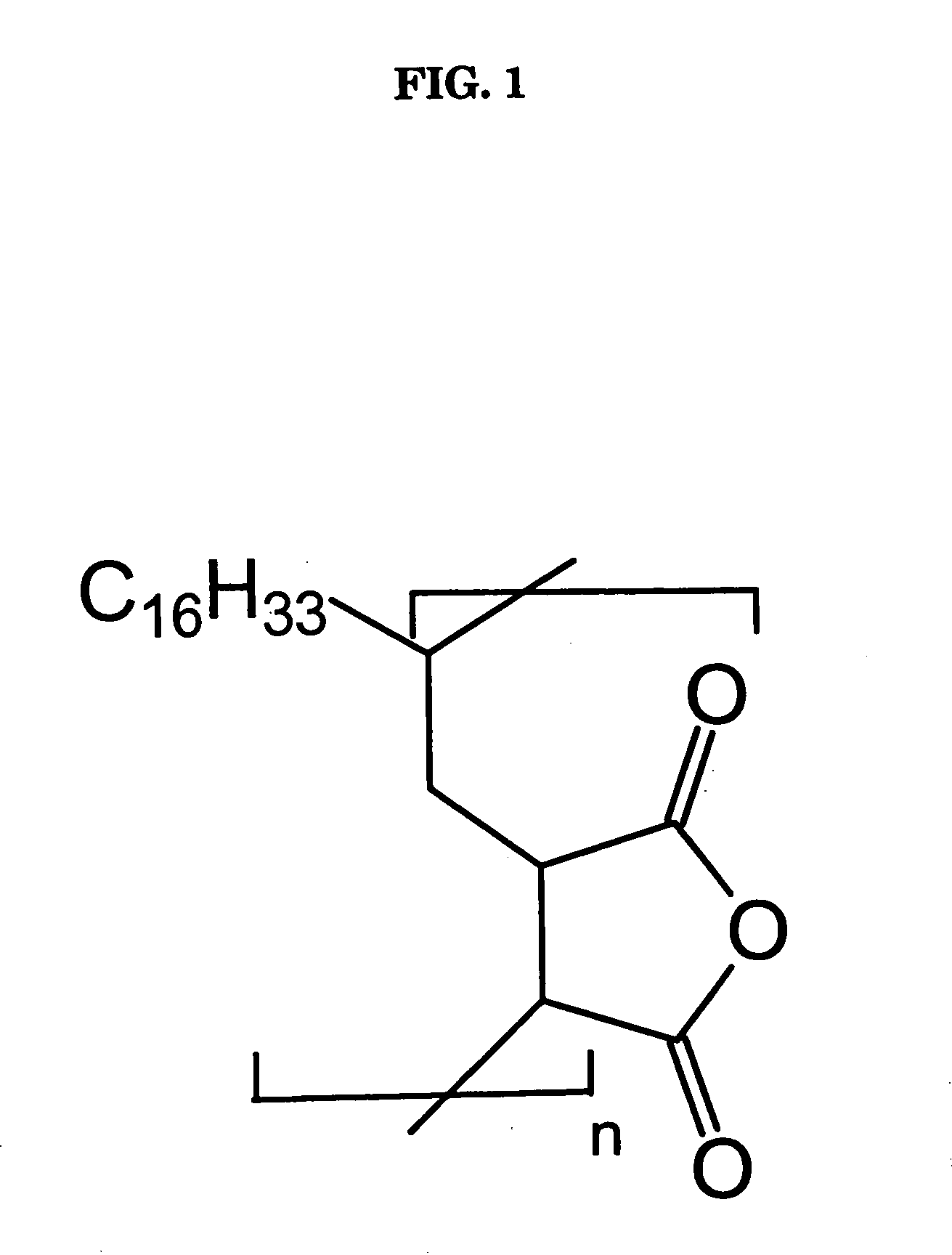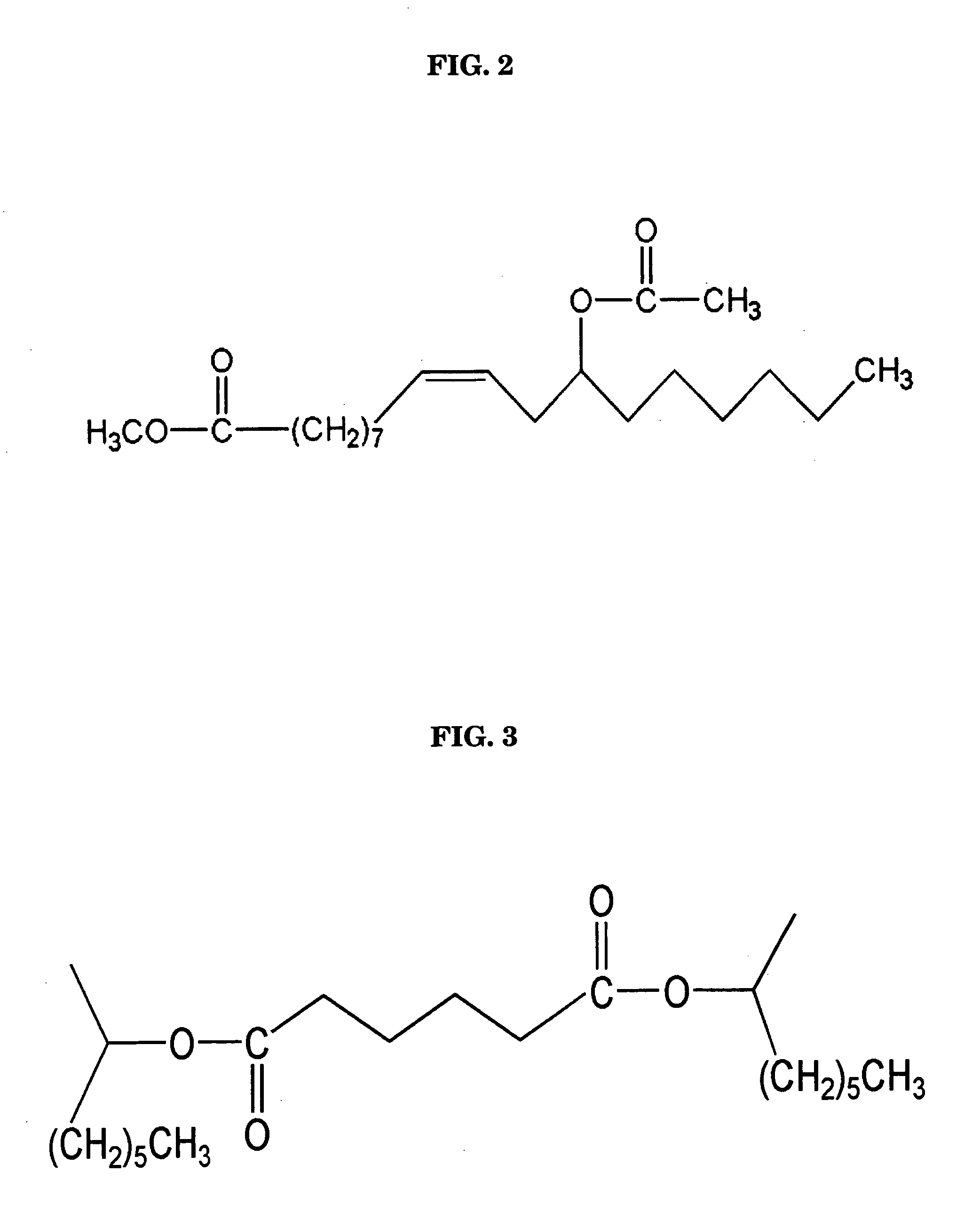Delivery system for film-forming polymer
a delivery system and film-forming polymer technology, applied in the field of film-forming compositions, can solve the problems of low film-forming composition concentration, unstable film-forming composition, and inability to achieve high solubilization rates,
- Summary
- Abstract
- Description
- Claims
- Application Information
AI Technical Summary
Problems solved by technology
Method used
Image
Examples
example 1
[0017] Using a steam jacketed stainless steel mixing tank equipped with a stainless steel propeller mixer and cover, 25 kg of Dicapryl Adipate was added at 25° C. Slow to moderate mixing was then used while adding 25 kg of Methyl Acetyl Ricinoleate. This mixture was then heated to a target temperature of 120° C. at a rate of approximately 2° C. per minute. During this heating period, 50 kg of PA-18 HVLC Polyanhydride Resin was slowly and incrementally added. Once all of the PA-18 HVLC Polyanhydride Resin was added, the mixing speed was increased to accommodate the dispersion of the resin powder.
[0018] Once all of the resin powder has been dispersed, the mixing speed was reduced to avoid aerating the mixture and mixing was continued until the batch reached 120° C. This temperature was maintained for 30 minutes while slow mixing was continued. Heating was then stopped and the batch temperature was decreased to 50° C. with continued slow mixing under vacuum conditions.
example 2
[0019] Using the same mixing tank and conditions as with Example 1, 10 kg of Dicapryl Adipate was added at 25° C. Slow to moderate mixing was then used while adding 35 kg of Methyl Acetyl Ricinoleate. This mixture was then slowly heated to a target temperature of 120° C. During this heating period, 55 kg of PA-18 HVLC Polyanhydride Resin. As before, the mixing speed was increased to accommodate the dispersion of the resin powder. Once the of the resin powder has been dispersed, the mixing speed was reduced and heating continued until the batch reached 120° C. This temperature was maintained until all solids were melted and dispersed, while slow mixing was continued.
example 3
[0020] Using the same mixing tank and conditions as with the previous examples, 35 kg of Dicapryl Adipate was mixed with 35 kg of Methyl Acetyl Ricinoleate at 25° C. This mixture was then slowly heated to a target temperature of 120° C., during which 30 kg of PA-18 HVLC Polyanhydride Resin was added. As before, the mixing speed was increased to accommodate the dispersion of the resin powder. Once the of the resin powder has been dispersed, the mixing speed was reduced and heating continued until the batch reached 120° C. This temperature was maintained until all solids were melted and dispersed, while slow mixing was continued.
PUM
| Property | Measurement | Unit |
|---|---|---|
| Temperature | aaaaa | aaaaa |
| Fraction | aaaaa | aaaaa |
| Fraction | aaaaa | aaaaa |
Abstract
Description
Claims
Application Information
 Login to View More
Login to View More - R&D
- Intellectual Property
- Life Sciences
- Materials
- Tech Scout
- Unparalleled Data Quality
- Higher Quality Content
- 60% Fewer Hallucinations
Browse by: Latest US Patents, China's latest patents, Technical Efficacy Thesaurus, Application Domain, Technology Topic, Popular Technical Reports.
© 2025 PatSnap. All rights reserved.Legal|Privacy policy|Modern Slavery Act Transparency Statement|Sitemap|About US| Contact US: help@patsnap.com


